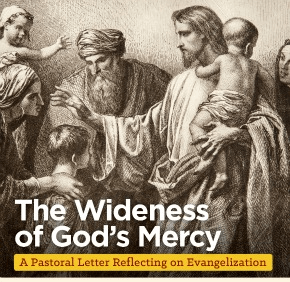By George P. Matysek Jr.
gmatysek@CatholicReview.org
Twitter: @ReviewMatysek
As Catholic dioceses across the Northeast face major decisions on what to do with schools and churches built decades ago for much larger Catholic populations, Bishop Mitchell T. Rozanski believes sharing information is key to any planning process.
“You have to present all the facts and get together a group that can look realistically at the picture,” said Bishop Rozanski, a former auxiliary bishop of Baltimore who became head of the Diocese of Springfield, Mass., last year.
“It’s never an easy process to go through,” he said. “It involves a certain amount of letting go – and it involves a certain amount of mourning and saying goodbye to the past.”
Bishop Rozanski was in Baltimore for the annual fall meeting of the U.S. Conference of Catholic Bishops Nov. 16-19. He spoke with the Catholic Review Nov. 20 via telephone upon his return to Springfield.
In Western Massachusetts, Bishop Rozanski has worked with community leaders on developing a plan for the future of Cathedral High School, a 275,000-square-foot building erected for 3,000 students in 1958. The school’s enrollment had declined to 426 when it was destroyed in a tornado in June 2011. It had suffered additional declines after moving to a temporary location.
Following a study by a planning committee, the bishop accepted a recommendation to combine Cathedral High School with Holyoke Catholic High School, another school that also had steep enrollment declines in recent years.
A new building will be erected for the combined high school, which will be known as Pope Francis High School – a name selected by students. Bishop Rozanski believes the new high school will be the first in the nation to honor Pope Francis.
In the Northeast, Bishop Rozanski said, understanding shifting demographics will be essential to how the Catholic Church best uses its resources to serve people. It’s a much different world from when factories employed tens of thousands of people in cities, he said, and large ethnic parishes could be found on almost every block.
“Once the factories closed and moved out,” he said, “the population shifted. You had fewer resources to work with and fewer people. The buildings truly can become such a burden that the parish can’t do everything else that a parish should be doing.”
He noted that his predecessor undertook a “huge” parish planning process prior to Bishop Rozanski’s arrival in Springfield. The diocese reduced the number of parishes from 135 to 81.
In the Baltimore archdiocese, the bishop had been very involved in parish planning in Western Maryland, where five Cumberland-area parishes joined together to form one new parish, Our Lady of the Mountains.
“Going through that process in Baltimore really helped me here because it was truly a collaborative process that we worked through,” he said. “Western Maryland is very similar to Western Massachusetts. I sometimes think they could almost be mirror images of one another.”
Bishop Rozanski, who occasionally returns to his hometown to visit, plans to celebrate Thanksgiving with his parents at their home in Dundalk. He said he has been warmly welcomed in Massachusetts. In addition to family, friends and clergy in Baltimore, he misses crab cakes.
“I went to a restaurant in Springfield,” he said with a laugh. “They said, ‘We have Maryland crab cakes.’ I said, ‘No, you don’t.’ ”
Also see:
Q&A with Baltimore native Bishop Mitchell T. Rozanski
Bishop Rozanski’s parents nurtured his faith


